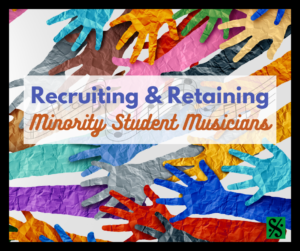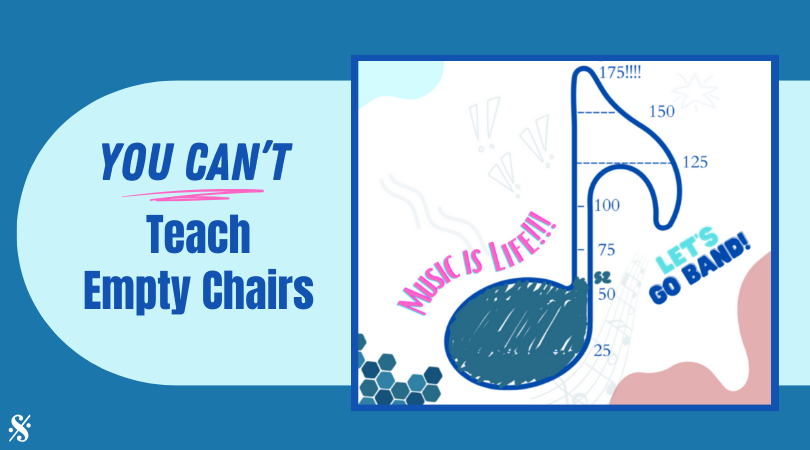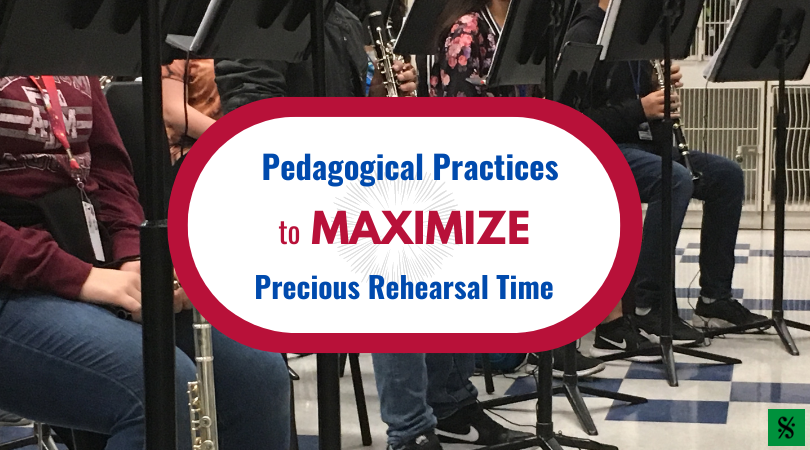Before I transitioned to higher education, I spent 10 years as a middle school and high school band director in Title I schools. When I began teaching, one struggle I had to address was low enrollment. By empowering my students and collaborating with parents, administrators, and community partners, I was able to build sustainable recruitment and retention systems that made the process rewarding and fun. In conversations I have had with my colleagues and friends who have tried hard just to keep students involved during the pandemic, we understand how daunting a task it can be to revitalize our programs. With that in mind, I would like to offer some approaches that I have found useful for recruiting and retaining student musicians in general and students from underserved communities specifically.

When I consider the things I could do to make my ensembles more appealing, accessible, and inclusive, I like to use the acronym I.D.E.A. (Inclusion, Diversity, Equity, Access) as a helpful reminder. Inclusion – The act of creating environments in which all my students feel welcomed, respected, represented, supported, and valued. Diversity – By celebrating all the unique ways that we are different, we can demonstrate the unifying power of music in divisive times. Equity – Ensuring that all have an opportunity to make music in meaningful and expressive ways. Access – The commitment we have for everyone to be able to fully participate in our programs. Mitigating barriers to participation in music is essential.
A student-led approach to recruitment and retention
While we all do our best to grow our programs to allow for as many students to be included as possible, it takes dedicated planning and implementation to attract and retain students from a wide range of backgrounds and experiences. I have found that by building authentic relationships and establishing trust with my students early on, I was able to empower them to be creative and help with recruitment efforts. The following activities were just a few things I did to successfully recruit and retain students. Use these as a guide, but also feel free to allow room for your own creativity to better adapt these strategies to your setting.
Empower students to make curricular and instructional decisions. Early in my career, I created student committees for music selection, clerical tasks, half-time show planning, dance routine/choreography, arranging trips, fundraising, and recruitment. This allowed my students to compose and conduct their compositions at concerts, write arrangements and chart drills for half-time shows, develop the visuals and choreography for competitions, and propose pieces to perform for performance assessment.
Allow students to be an active part of recruitment efforts. One of the key factors to recruitment and retention success includes making students full participants in recruitment. When we would go to recruit at our feeder schools, not only would I bring a group of students to perform, but I would also let my students talk to the group and allow time to meet and greet potential members. We would also have at least one cluster concert per year with all the programs in the cluster. Throughout the concert, I would have students read program notes for the pieces we were playing, and near the conclusion of our portion, I would have a few students briefly share their experience in the band and why it means so much to them.
Organize community-building events. With the help of my students and parent volunteers, we would host a variety of activities such as cookouts, ice cream socials, movie nights, and gaming tournaments. Our focus was not so much music-focused but more community-driven to give students a safe space where they were encouraged to bring a friend or sibling who was not a part of the music program (yet). This helped our students feel like the band was more than a performing group and made it feel like a true family.
Conclusion
I believe that it is important for our students to feel that they are truly at the center of everything we do. I hope that some of the recruitment and retention strategies shared can help strengthen your programs and help bring communities together. We must include and engage our students in all aspects of our program, for with greater inclusion comes new opportunities for us to improve our teaching, enhance student learning, and take our programs to the next level.
Dr. Robert L. Bryant III is an assistant professor of music and music education coordinator at Tennessee State University. He earned degrees from Florida A & M University (B.S.), Florida State University (M.M.E.), Georgia Southern University (M.Ed.), and Mercer University (Ph.D.). Before his current role, Dr. Bryant taught middle school and high school band in Florida, Georgia, and Alabama in urban, suburban, and rural Title I schools.




Leave a Reply
You must be logged in to post a comment.